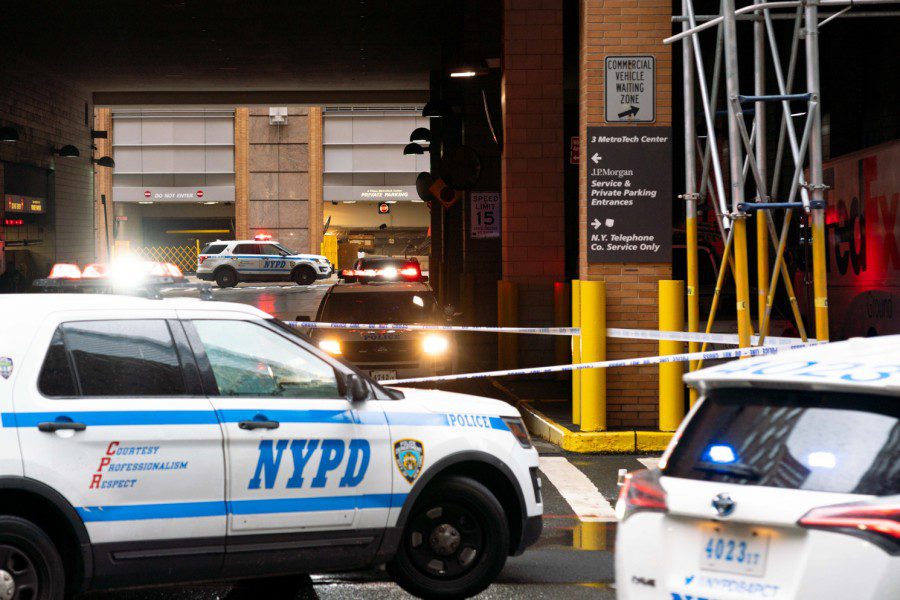Content warning: This article contains mentions of gun violence.
I am no stranger to the countless conversations surrounding the effects and limits of gun ownership. After all, I grew up in Georgia, a place where owning a gun is common — even some of my peers carried for protection or used a gun for recreational purposes. But a gun’s ever-present capacity for irreparable harm, proven by the school shootings in Sandy Hook, Connecticut or Parkland, Florida, has never left the back of my mind. The danger of firearms still felt quite distant and foreign to my own experiences — until now. The recent Apalachee High School shooting that took place only a few hundred miles from my home, in which two students and two teachers were murdered, wasn’t just another headline for me; it was a wake-up call.
When a shooting happens in a place you call home, debates about gun control become personal. It makes you realize how easy it is for a shooting to occur at your high school or university.
Gun violence in the United States has reached crisis levels. Firearms have killed roughly 11,598 people in the United States in 2024 alone, and gun violence remains the leading cause of death among children and teenagers. These aren’t just statistics — they are lives shattered, families devastated and communities left reeling. There have also been over 385 mass shootings this year alone, which by definition each involve four or more individuals being shot or killed. Of those, at least 50 have been school shootings, with 13 on college campuses and 37 in K-12 schools.
In light of what is at stake, it seems unconscionable not to do everything in our power as U.S. citizens to truly make a difference.
Many lawmakers continue to cling to the narrative that gun violence is an inevitable “fact of life” that we have to move on from. I don’t buy into that defeatist mentality. Placing heavy restrictions on firearms does, in fact, contribute to lowering the number of gun-related deaths. Background checks, waiting periods, raising the minimum age to buy firearms and stricter licensing requirements all play critical roles in keeping dangerous weapons out of the wrong hands. According to data from the Giffords Law Center, states with the strictest gun laws experience a rate of gun-related deaths well below the national average, whereas states with very loose gun restrictions experience extremely above-average rates of shootings. It is important to note that Georgia has some of the weakest gun control laws in the country.
There are solutions, and they are within reach. The Assault Weapons Ban of 2023 and the Bipartisan Background Checks Act are both legislative items that are struggling to get through Congress. Both are critical steps in addressing this crisis, but they wont pass on their own. They need public pressure from all of us — not just students, not just activists, but everyone who believes in the right to live without fear of gun violence.
Students have done an amazing job shifting the needle for gun control with the limited resources they have. The student-led March for Our Lives is a fantastic example of how sheer numbers can be obtained by protesting. What started as a grassroots movement led by student survivors of the 2018 shooting at the Marjory Stoneman Douglas High School in Parkland, Florida led to statewide policy change, such as raising the minimum age to purchase firearms from 18 to 21 and creating a law that allowed authorities to take firearms from people they deem a threat. This shows that real change is possible, but it requires persistence, determination and, above all, public pressure. We need to continue pushing for these changes, not just in the wake of a tragedy, but every day, until we see meaningful progress.
Social media platforms can be powerful tools for mobilizing action. By sharing stories, data and campaigns, we can keep the conversation going and ensure that the tragedies of gun violence are not forgotten. That being said, online acknowledgments alone are not enough. Advocacy must also happen in the real world. Move beyond the screen and show up to your town hall, organize a fundraiser, and call and write to your representatives. Be vocal about the need for gun control and sit down and have those hard conversations with people who disagree with you.
The responsibility to prevent these tragedies shouldn’t fall solely on students. Students do not have the resources, positions or money to change laws on their own, but those who do are not doing their jobs. It is left to us to hold those who do have power — lawmakers, elected officials and community leaders — accountable. If they won’t change the laws on their own, we must demand it from them.
This fight can begin anywhere — on a national level, in local communities and even on college campuses. By organizing, educating and demanding safe schools for students, we can help influence policy and contribute to creating a safer environment for all. It would pain me and many others to see the brutality witnessed during the Apalachee High School shooting on Sept. 4 simply be swept under the rug, or worse, repeated. Let’s not wait like sitting ducks for the next tragedy to happen in our backyard to realize the urgency of this issue. Every shooting, like the one at Apalachee High School, is a reminder of how much we stand to lose if we continue to wait for change.
WSN’s Opinion section strives to publish ideas worth discussing. The views presented in the Opinion section are solely the views of the writer.
Contact Benjamin Rabb at [email protected].


























































































































































